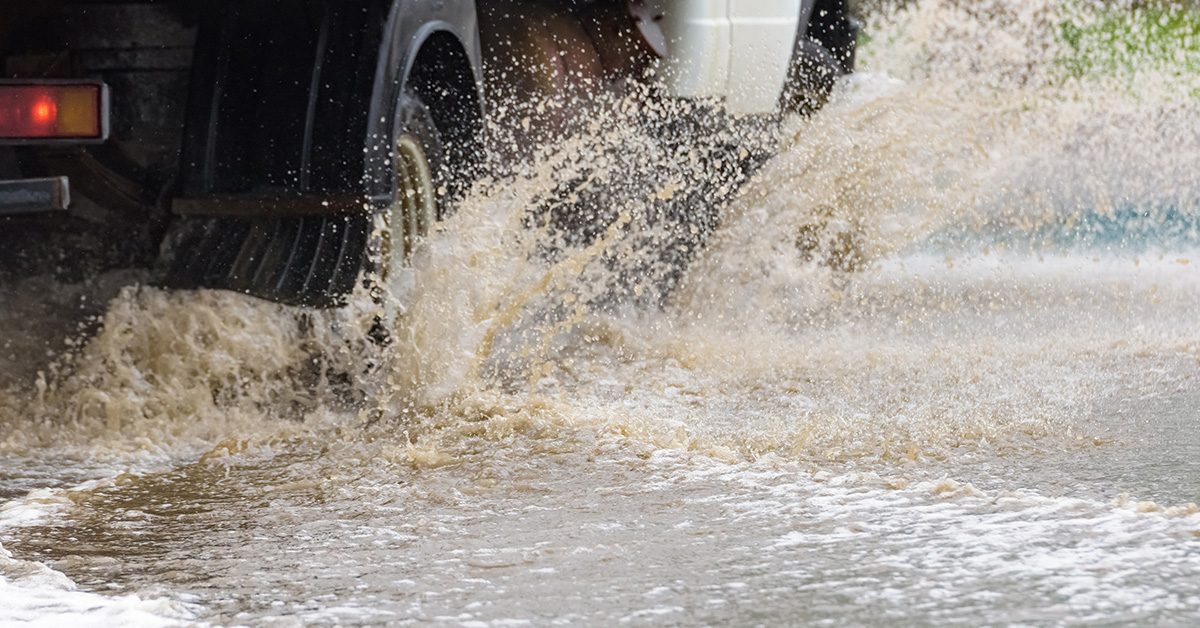In the weeks following the catastrophic landfall of hurricanes Helene and Milton, the focus has shifted from recovery to cleanup and damage assessment. As the devasting storm surges, mudslides and extensive flooding destroyed lives, homes, and roadways, CHAMPS members operating services fleets find themselves in a difficult situation.
With many vehicles possibly exposed to high water levels, owners will need to carefully evaluate whether a vehicle has been damaged, and if so, to what extent. And not only that, as you will see below, flood exposure can compromise not just individual vehicles, but also overall operations and long-term costs for fleet managers.
By highlighting key areas to monitor — such as signs of flooding, hidden safety risks, and implications for resale value — this blog post aims to equip you with the knowledge needed to navigate the challenges ahead.
Here are four key areas to focus on:
Signs of Flooding
Look for warning signs in your vehicles, such as moisture in the trunk or carpet, water lines in the engine compartment, rust underneath the vehicle, mud in the glove box, or musty odors. These indicators suggest your fleet vehicles may have been exposed to water damage, which can compromise their performance and safety.
Compromised Safety Due to Hidden Damage
Even if a vehicle seems functional after repairs, water damage can create hidden problems. Electrical systems, often exposed to saltwater, may not show issues immediately but can corrode over time, leading to system failures down the road. Softened hoses, damaged seals, and weakened structural components may also reduce vehicle safety, making them less reliable for service operations.
Flood Damage Beyond Immediate Repairs
Flood damage can also extend to other critical areas like transmissions, brake systems, and fuel tanks, where water intrusion could lead to major repairs. For a fleet that operates in storm-prone regions, it's vital to address these vulnerabilities, as damage to multiple vehicles at once can severely disrupt business.
Lower Resale Value and Insurance Challenges
Vehicles that have sustained flood damage typically have a lower market value. This not only affects your ability to trade them in or sell them but also increases restoration costs.
Additionally, flood-damaged vehicles are more expensive to insure, or in some cases, insurers may refuse coverage altogether. If your fleet includes vehicles with flood histories, plan for these challenges when calculating long-term operational expenses.
Proactively identifying flood damage and addressing repairs can save your business from safety risks and financial losses.
Contact CHAMPS to learn how you can save on vehicles with Alliance Fleet.
About Jonathon Spitz:
Jonathon Spitz is a fleet management expert with extensive industry expertise. He is a co-owner of Alliance Fleet Solutions, a family-owned business in Denver, CO, which is a CHAMPS contracted supplier. Formerly a general manager of a trade service contractor, Jonathon brings real-world fleet management experience to his role. A family man with a 32-year marriage, two adult children, and a passion for helping to rescue dogs, Jonathon combines professional acumen with personal values to deliver tailored fleet solutions.







Post your comment
Comments
No one has commented on this page yet.
RSS feed for comments on this page | RSS feed for all comments